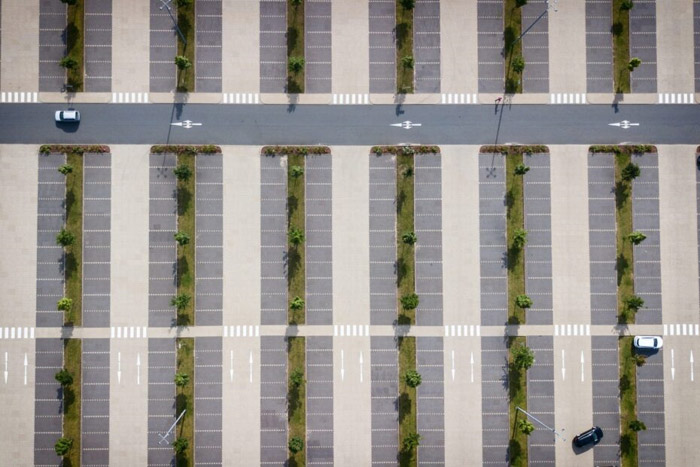Rethinking Lifestyle
Peter Penner Picked a Place to Park his Pickup

When you take a walk down Main Street Steinbach, you may notice that something does not feel quite right. There’s an aura that hangs over your head; a feeling of discomfort that is difficult to pin down.
But why should you be uncomfortable? This place is bustling with activity. Shops, banks, restaurants; there’s a lot to do here and a lot of people to do it with, and as the social creatures we are it’s an environment that feels second nature to us.
At least, you’d think that it would.
Your mood is by and large influenced by the scale of the space you’re in. For the most part Main Street is built pretty well, it has many retailers that are set right up against the sidewalk which is great for people because that type of development is built to human scale. You can walk up to the front door and go right in without needing to exit the sidewalk or enter a space designed for cars, it was designed for you directly.
You will also come across buildings that have been set back from the road to allow a parking lot to be built; a space uniquely designed for cars. In order to reach a building with such a setback it would require you to exit the sidewalk and place yourself directly in an area where cars will be in motion.
This is called the built environment. Everything in a city was designed and created from the ground up with a clear intention. Somebody had to sit down and work out exactly how any given space will be used and what the priorities are. When your built environment is designed entirely around cars, you are not going to feel welcome outside of one.
In the ecosystem of a built environment, parking lots serve one singular purpose. They allow cars to sit on them while the owner is elsewhere. In doing so however, they occupy the same land that could have been much better used for more buildings. Productive buildings like shops and housing will bring prosperity to a place, but when you raze them to put up a parking lot all you’re left with is a slab of concrete that will likely sit empty for 50% of its life and will require near constant upkeep and maintenance.
One unique aspect about the parking you’ll find in Steinbach is that there isn’t a single parking meter to be found, meaning when you drive in to our downtown you can expect to find a parking space without needing to pay to use it. The intention here is that you should be able to live 15-30 minutes away by car where housing is likely more affordable, Steinbach will always have a free parking spot for you when you get here. To ensure this, parking is made to be abundant.
Because people won’t need to pay to park their car, it is often cheaper for people to live far away from the downtown and make the drive in than it is for people who live close to the downtown and don’t need to drive at all. It’s a cycle that drives people away from the city core. As more people are forced out, the need for cars increases as is the need for more parking which makes other modes of transport less attractive.
This leads us to a core issue of modern city design – mandatory minimum parking requirements. A by-law written by the city that lays out how developers need to accommodate cars by assigning a pre-determined number of parking spaces needed to be built for any given building.
Parking requirements are for the most part nonsensical and arbitrary. Instead of asking the developer or property owner how much parking they believe is necessary for their space, the city has already assigned a number and committed it to law. When a new building is being planned, it is looked up in a table and whatever number of parking spaces is written down next to the type of business, that’s how many parking spaces are required to be built.
For example, a dental office built in Steinbach must have at the very minimum 2 parking spaces, or 2 spaces for every dental chair. A dentist with 10 chairs is required to build a parking lot that can accommodate 20 cars, but only a single bicycle. It doesn’t matter where the building is located or how the business expects its clients to arrive, any fewer than the minimum number of spaces will require a variance. This severely limits the use of existing buildings or in-fill sites which may physically be perfectly fine to transform into new businesses, but on paper do not meet the rigid minimum requirements.
For our city to be a safe and inviting place, it is essential to reevaluate these parking requirements and embrace a more flexible and context-sensitive approach that accounts for the diverse needs of different businesses and promotes smarter, more adaptable urban development. We can foster a built environment that better serves both the community and its residents, reflecting the true essence of thoughtful and inclusive city planning.
This article was originally written for Strong Towns Steinbach, found at strongtownssteinbach.org.




